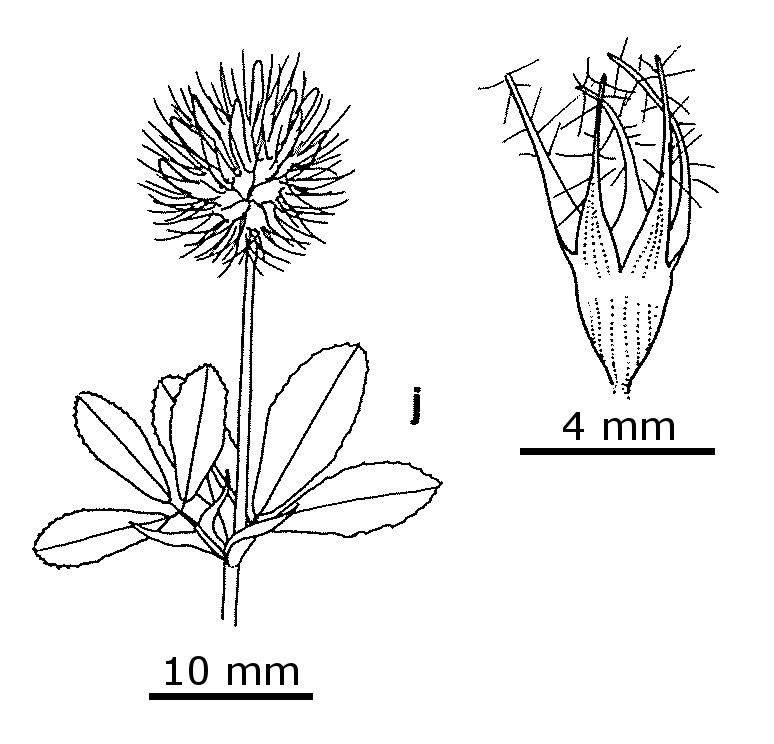Trifolium lappaceum var. lappaceum
Bristly CloverErect or ascending annual herb; stems few to many, 5–40 cm long, flexuose, terete, hirsute to glabrous. Leaves palmately trifoliolate, short-to long-petiolate; leaflets obovate, 5–15 mm long, 3–8 mm wide, appressed-hairy, minutely dentate on upper margins, apex rounded or truncate; stipules membranous, veined, hairy. Inflorescence many-flowered, terminal, globose, rarely ovoid, 10–15 mm long, 10–15 mm wide, pedunculate; flowers sessile. Calyx 7–9 mm long, tube obconical or campanulate, 20-veined, glabrous or glabrescent, throat open, ciliate, thickened in fruit, teeth as long as or longer than tube, equal to subequal, setaceous, long-ciliate, erect in fruit; corolla 7–10 mm long, pink, persistent; standard almost as long as wings and keel. Pod ovoid, c. 2 mm long, membranous, included in calyx tube; seed 1, ovoid, c. 1.5 mm long, brownish, shiny. Flowers mainly Nov.–Feb.
Known only from near Melton and in the Kaniva district of western Victoria.
Zohary & Heller (1984) recognize 2 varieties, only the type variety occurring in Victoria.
Jeanes, J.A. (1996). Fabaceae. In: Walsh, N.G.; Entwisle, T.J., Flora of Victoria Vol. 3, Dicotyledons Winteraceae to Myrtaceae, pp. 663–829. Inkata Press, Melbourne.
 Spinning
SpinningZohary M.; Heller, D. (1984). The genus Trifolium. Israel Academy of Sciences and Humanities, Jerusalem.
